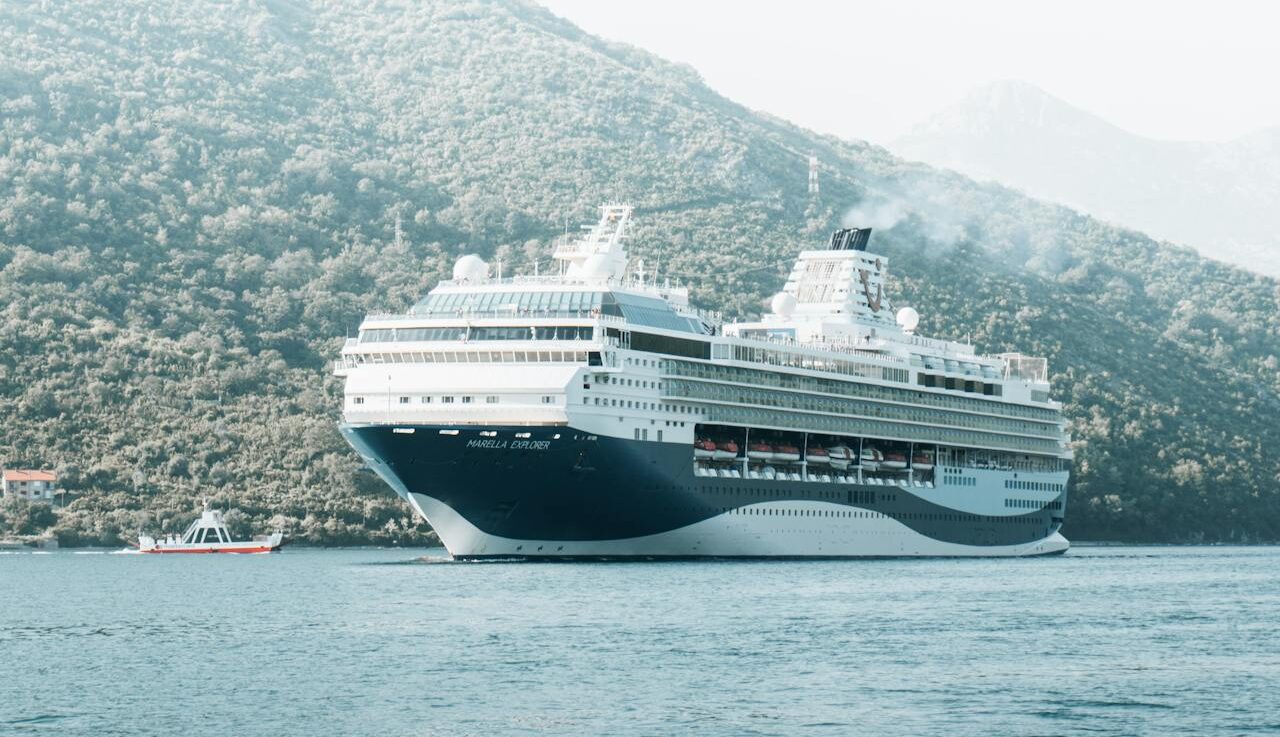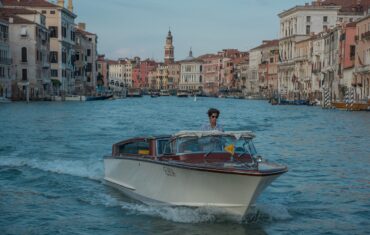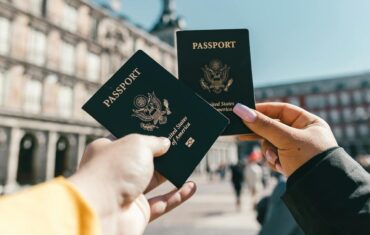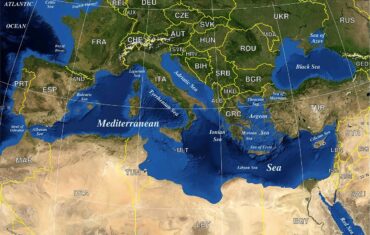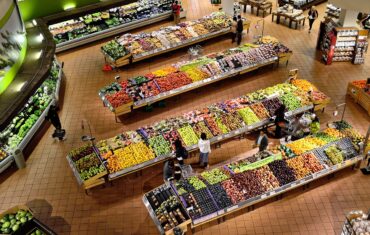1. The Environmental Impact on Venice
Erosion of the Lagoon
Venice, a city built on a series of islands in a delicate lagoon, is particularly vulnerable to the effects of large cruise ships. The ships’ massive size and the waves they generate can cause significant erosion of the lagoon’s fragile ecosystem. This erosion not only threatens the stability of Venice’s foundations but also disrupts the natural balance of the lagoon, endangering its wildlife and plant life.
Air and Water Pollution
The engines of cruise ships emit large amounts of pollutants, including sulfur oxides, nitrogen oxides, and particulate matter, which contribute to air pollution in Venice. Additionally, the ships can release wastewater and other pollutants into the lagoon, further degrading the water quality. These environmental factors have a direct impact on the health of the city’s residents and the preservation of its historic buildings.
Visual and Aesthetic Damage
The sight of enormous cruise ships towering over Venice’s iconic skyline has been a source of controversy. Many argue that these ships are out of scale with the city’s architecture and detract from the beauty and historical significance of Venice. The presence of these ships in such close proximity to the city’s historic center is seen by many as an affront to the cultural heritage of Venice.
2. The Impact on Greek Islands
Overtourism and Strain on Resources
Greek islands like Santorini, Mykonos, and Corfu have become top destinations for cruise ship passengers, leading to a surge in tourism numbers. While this influx of tourists brings economic benefits, it also puts a significant strain on the islands’ resources, including water, food supplies, and waste management systems. The small size of these islands makes it difficult to accommodate the large number of visitors that arrive daily during peak season, leading to overcrowding and environmental degradation.
Damage to Marine Ecosystems
The waters surrounding the Greek islands are home to diverse marine ecosystems, including coral reefs, seagrass beds, and a variety of fish species. The anchors of cruise ships can cause physical damage to these delicate habitats, while the discharge of pollutants from the ships can harm marine life. The increased maritime traffic also poses risks to local fishing industries and the overall health of the marine environment.
Cultural and Social Impact
The arrival of thousands of cruise passengers in a single day can overwhelm the local communities on these islands. Traditional ways of life and local customs can be disrupted by the constant presence of tourists, leading to a loss of cultural identity. Moreover, the focus on catering to tourists can lead to the commercialization of local culture, where authentic experiences are replaced by those designed primarily for profit.
3. Efforts to Mitigate the Damage
Venice’s Cruise Ship Ban
In response to growing concerns, the Italian government announced a ban on large cruise ships entering the historic center of Venice in 2021. The ban, which applies to ships over 25,000 tons, requires these vessels to dock at the industrial port of Marghera instead of sailing through the heart of Venice. While this is a significant step forward, there are ongoing debates about the effectiveness of the ban and the long-term solutions needed to protect Venice.
Sustainable Tourism Initiatives in Greece
Some Greek islands are taking steps to manage the impact of cruise tourism by promoting sustainable practices. This includes limiting the number of cruise ships allowed to dock each day, encouraging longer stays on the islands, and promoting off-peak travel to reduce overcrowding. Additionally, there are efforts to raise awareness among tourists about the importance of respecting the local environment and culture.
4. The Significance of “No Grandi Navi”
The Movement Behind the Phrase
“No Grandi Navi,” which translates to “No Big Ships,” has become a powerful rallying cry for Venetians who oppose the presence of large cruise ships in their city. This grassroots movement began in response to the growing concern over the environmental and cultural damage caused by these enormous vessels. The phrase has become synonymous with the fight to protect Venice’s fragile ecosystem, its unique architecture, and the overall quality of life for its residents.
Protests and Public Outcry
The “No Grandi Navi” movement has gained significant momentum over the years, with locals staging protests, demonstrations, and public campaigns to raise awareness about the issue. One of the most notable protests occurred in 2019 when thousands of Venetians took to the streets and canals to demand a ban on large cruise ships. Activists, environmentalists, and even celebrities have joined the cause, bringing global attention to the movement.
Impact on Policy and Legislation
The persistence and dedication of the “No Grandi Navi” movement have played a crucial role in influencing policy decisions. The Italian government’s 2021 decision to ban large cruise ships from entering Venice’s historic center was seen as a major victory for the movement. However, activists continue to push for more comprehensive solutions, such as stricter regulations on ship size and emissions, as well as investments in sustainable tourism alternatives.
A Symbol of Resistance
Beyond its specific goals, “No Grandi Navi” has come to symbolize a broader resistance to the forces of over-tourism and unchecked development. It represents a community’s determination to preserve its cultural heritage and protect its environment from the pressures of mass tourism. The movement has also inspired similar initiatives in other parts of the world, where communities are facing the challenges of balancing tourism with preservation.
5. Cruise Ship Tourism: Economic Impact vs. Overcrowding
Limited Economic Contribution
One of the lesser-discussed issues with cruise ship tourism is that, despite the large number of visitors, cruise ship passengers often contribute less to the local economy than tourists who stay longer in a destination. Many cruise passengers spend only a few hours in port, during which they might visit a few major landmarks, buy some souvenirs, and possibly dine at a local restaurant. However, much of their spending is confined to the cruise ship itself, where meals, accommodations, and entertainment are included in the package price.
In Venice, for example, studies have shown that cruise passengers spend significantly less per day than those who stay in hotels, dine at local restaurants, and engage in more extended activities. This disparity means that while cruise ships bring a high volume of tourists, the actual economic benefit to the local economy is relatively modest compared to the strain they place on the city’s infrastructure and resources.
Overcrowding and Strain on Resources
Despite their limited economic contribution, cruise ship passengers significantly increase the number of people in already crowded tourist destinations like Venice and popular Greek islands. This sudden influx of visitors can lead to severe overcrowding, making it difficult for locals and other tourists to navigate the city’s narrow streets, visit attractions, or enjoy a leisurely experience.
The strain on resources is another major concern. Cities and islands have to deal with increased waste, wear and tear on infrastructure, and the need for additional services like transportation and emergency response. This burden is often not offset by the spending of cruise ship tourists, leading to a situation where the costs of accommodating these visitors outweigh the benefits.
Impact on Local Businesses
While some local businesses may see a temporary boost from cruise ship passengers, the long-term effects can be less favorable. The focus on catering to quick, low-spending visitors can lead to the rise of more generic, tourist-oriented shops and eateries, which may push out traditional businesses that cater to locals and long-stay tourists. This can erode the cultural fabric of the destination, making it more difficult for local businesses to thrive and for the destination to maintain its unique character.
Wrap-Up: A Delicate Balance
The arrival of large cruise ships in Venice and Greece presents a complex challenge. While these ships bring economic benefits and allow travelers to experience these beautiful destinations, they also pose significant risks to the environment, local communities, and cultural heritage. The “No Grandi Navi” movement in Venice highlights the importance of local voices in the fight to protect these fragile locations. Additionally, the limited economic contribution of cruise ship passengers compared to the strain they place on resources underscores the need for a more balanced approach to tourism. Finding a balance between tourism and preservation is essential to ensure that future generations can continue to enjoy the beauty and history of Venice and the Greek islands. By promoting sustainable tourism practices and implementing stricter regulations, it is possible to protect these destinations while still welcoming visitors from around the world.

